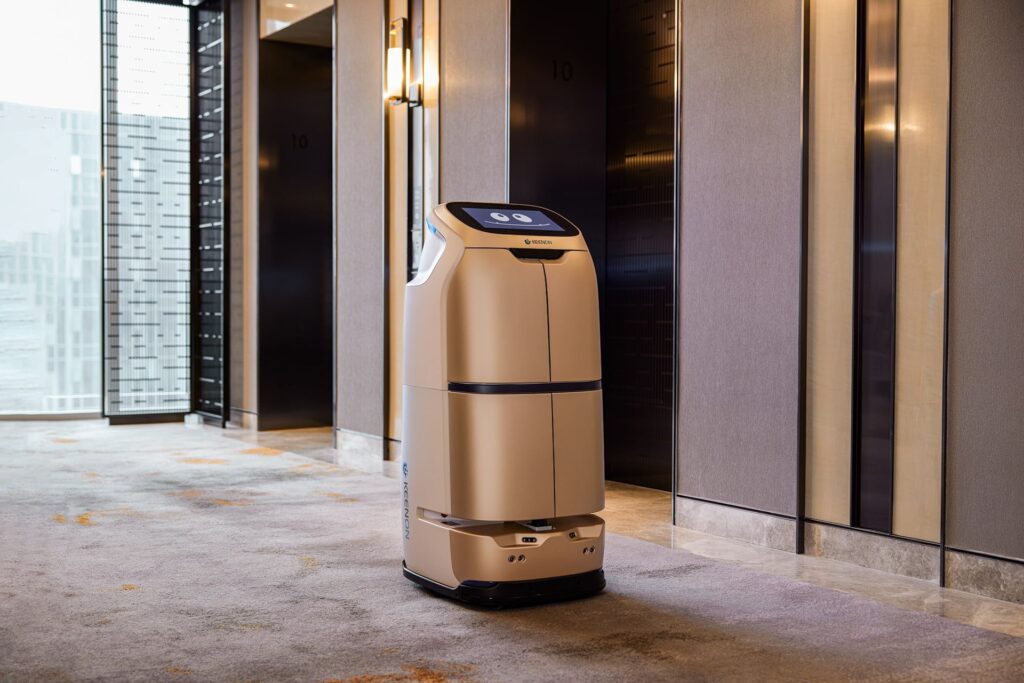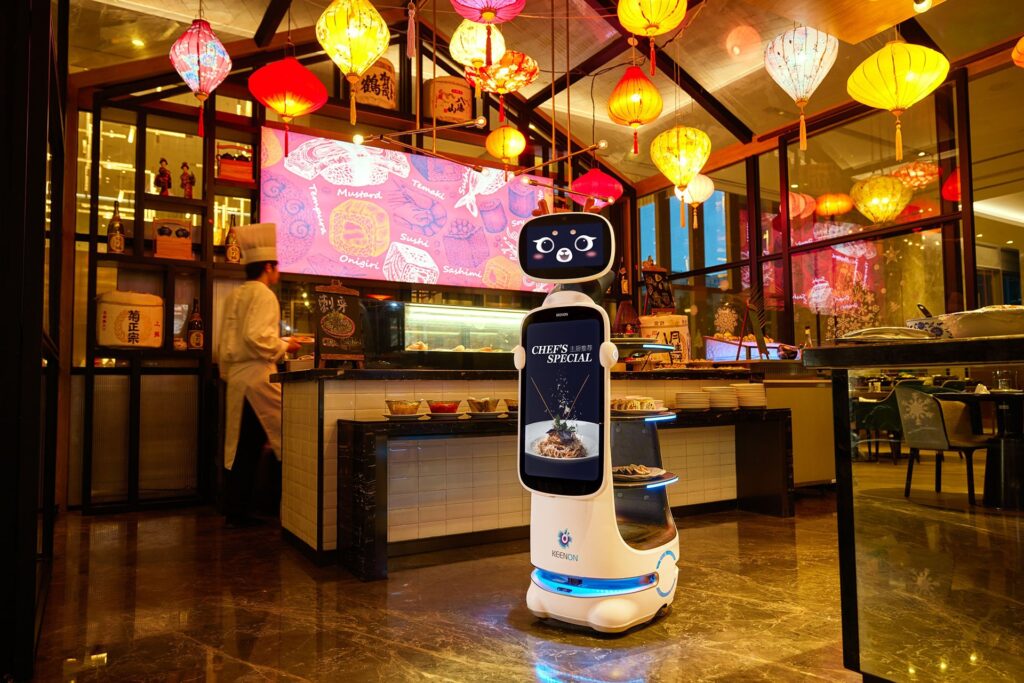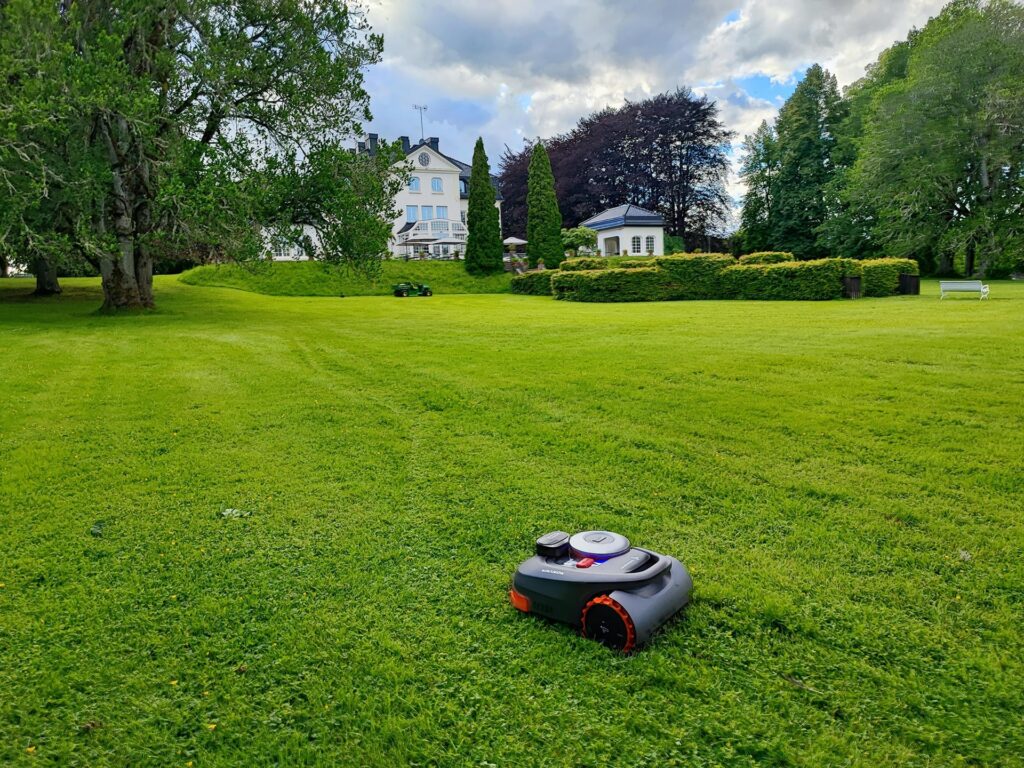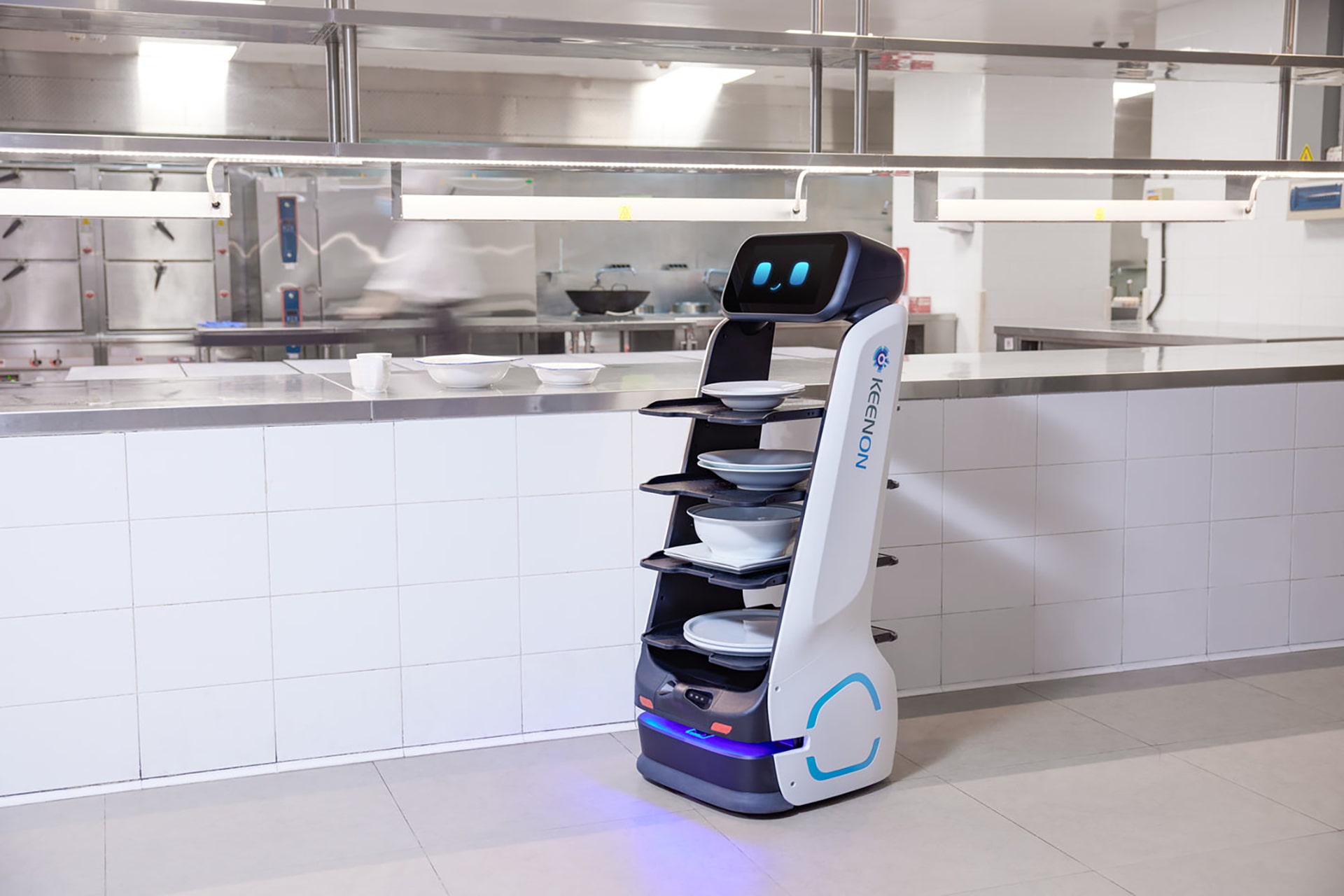While traveling through Europe for over two weeks, entrepreneur Ren Guanjiao encountered something unexpected: Navimow robotic lawn mowers buzzing across several Airbnb courtyards.
Today, service robots are becoming common fixtures in homes, restaurants, hotels, office buildings, and retail outlets worldwide. A substantial portion of these machines are made by Chinese companies.
A few years ago, international markets were an escape route for Chinese robotics firms squeezed by stiff domestic competition. Now, with automation and intelligent solutions in higher demand globally, expanding abroad has become the natural course for Chinese robot manufacturers.
According to the China Commercial Industry Research Institute, the global service robot market reached around USD 25 billion in 2023 and is expected to hit USD 29 billion in 2024. Meanwhile, China’s service robot market is forecasted to reach RMB 73.755 billion (USD 10.4 billion).
As demand rises, these companies are contemplating their next moves to overcome global challenges.
Cracking new markets: Growth and expansion
For some early movers, overseas expansion has already paid off.
Yu Hao, founder of Dreame, revealed internal figures showing that the company’s overseas business grew by 120% in 2023. During Amazon’s Prime Day sale, Dreame’s gross merchandise value (GMV) in southwestern Europe surged 80% year-on-year (YoY), reaching RMB 1.8 billion (USD 253.8 million), largely driven by floor washers. The North American and Japanese markets also saw impressive gains, with 102% and 350% YoY increases, respectively. Gausium, meanwhile, shipped over 30,000 units in 2023, securing more than 60% of the market.
For many firms, developed regions like Japan, South Korea, Europe, and North America are the first stops.
These regions face ongoing labor shortages, high turnover, and recruitment challenges, creating strong demand for service robots to replace human workers. Leasing a commercial robot, for example, typically costs 30–50% of what a worker in these regions would earn. Given their high living standards, consumers in these markets are looking for robots that offer convenience and improve quality of life.
Investor Ning Peng, who closely tracks the robotics industry, pointed out that different robot categories find success in different markets. “Lawn mowers are big in Europe, while pool-cleaning robots perform better in North America,” Ning told 36Kr.
Segway-Ninebot, for instance, introduced its Navimow robotic lawn mower to European and North American markets in 2022. Earlier this year, it launched the Navimow i series, priced under EUR 999 (USD 1,110). Equipped with a proprietary positioning system, AI-powered mapping, and zone-specific lawn management, it quickly gained traction in Europe, where market penetration grew significantly.

In contrast, Southeast Asian countries—with lower purchasing power—favor service robots in the hospitality industry. Companies in these regions often look for cost-effective robotic solutions to offset rising labor costs.
The service robot sector is experiencing rapid global expansion, but entering new, unfamiliar markets presents challenges. Companies need to be nimble in business, robust in technology, and skillful at navigating diverse regional operations.
Navigating different markets: Tech and demand
The technical needs of service robots differ depending on the environment and market.
For instance, indoor robots frequently rely on light detection and ranging (LiDAR) for mapping and navigation. LiDAR offers greater precision but at a higher cost, making it less viable for outdoor use. Meanwhile, pool-cleaning robots face the unique challenge of wireless communication underwater.
Market channels also vary. Ning explained that Japan and South Korea are often first-choice markets for service robot companies due to aging populations and well-established distribution networks, which enable faster scaling.
Keenon Robotics demonstrates this trend, with its revenue evenly split between domestic and international markets, with overseas revenue slightly ahead. Its global expansion radiates outward from China.
Keenon primarily relies on agents and brand partnerships to handle sales overseas. COO Wan Bin told 36Kr that the company built teams in Japan, South Korea, the Middle East, the Asia Pacific, Europe, and the US during its initial expansion. “But the return on investment varies by region. Japan and Europe, for instance, offer better returns.”
To deliver better products and services, Keenon has also expanded its overseas technical and marketing teams to meet local market demands.

Ren from Segway-Ninebot noted that robotic lawn mower distribution channels are fragmented and require a more precise approach. Large accounts each have unique requirements, so sales strategies must be customized.
Over the past two years, Segway-Ninebot has regularly sent product development teams to research overseas markets, closely examining customer environments and use cases.
Overcoming supply chain hurdles, localizing operations
One of the biggest challenges for Chinese companies expanding globally is finding product-market fit. Products must meet market needs and deliver more value than their cost.
Demand for service robots varies across regions, shaped by local culture and environmental factors. Ren explained that markets mature at different rates, which affects how users adapt to new products. As a result, customer service needs differ by region, reinforcing the importance of localizing operations.
To address this, Navimow integrated a live chat feature into its app, allowing the company to respond to customers instantly across different countries. They have also established local customer service teams in key markets to support growing demand. “As lawn mowers go mainstream, the need for localized service models will only increase,” Ren said.
Keenon Robotics has developed different product lines tailored to specific markets. For example, Japan’s narrow restaurant aisles are a perfect fit for Keenon’s compact T8 robot. In Europe and North America, where restaurants are more spacious, the higher-end T9 Pro and T10 models, which feature self-service capabilities, are more popular.
For larger B2B customers, a single product often isn’t enough. Keenon offers W-series robots for hotel deliveries and X101 robots for medical supplies.
Wan added that Keenon tailors its product offerings to meet real-world needs. For example, a large restaurant might deploy several T10 robots and a few T8s to manage peak dining times, giving guests the option to wait for their food or have it delivered by a robot, reducing wait times.

In the lawn mower market, Ren emphasized the need for an efficient supply chain. Manufacturing takes at least a month, plus another one to two months for shipping, meaning that delivery from order to customer takes no less than three months. A supply shortage could create significant issues for companies.
To address this, Segway-Ninebot has set up a dedicated production-sales coordination team to manage supply and demand more efficiently.
In the first half of this year, Navimow’s global sales soared 316.69% YoY, with revenue reaching RMB 449 million (USD 63.3 million). During Amazon’s Prime Day, Navimow ranked first in global lawn mower sales across all price categories, selling out within hours of its launch.
Ren noted that while the company performed well this year, there’s still untapped potential. “We’ve done well, but there’s plenty of room for growth.”

Since the start of this year, over two-thirds of Chinese service robot companies have begun expanding overseas, and industry insiders are optimistic about the future.
Production is expected to ramp up at a rapid pace, and companies plan to boost their market penetration in developed regions, where growth is expected to accelerate.
Going global requires a long-term commitment and sustained investment. By acting now, Chinese robotics firms are positioning themselves for substantial growth over the next one to two years.
KrASIA Connection features translated and adapted content that was originally published by 36Kr. This article was written by Huang Nan for 36Kr.

